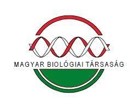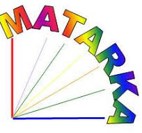A fali gyík (Podarcis muralis) városi elterjedését és állományszerkezetét befolyásoló tényezők vizsgálata
Absztrakt
A természetes élőhelyek elvesztésével egyre nagyobb jelentősége van a biodiverzitás települési környezetben történő megőrzésének. Ehhez azonban ismernünk kell az egyes fajok városi elterjedését befolyásoló tényezőket. Vizsgálatunkban arra kerestük a választ, hogy melyek azok a környezeti tényezők, amelyek a fali gyík (Podarcis muralis) budapesti elterjedését befolyásolják. A www.herpterkep.mme.hu segítségével 18 mintavételi helyet jelöltünk ki. Az adatgyűjtés 2013-ban történt, mintavételi területenként 5 alkalommal. Az alábbiakat rögzítettük: ivar, kor (juvenilis, szubadult, adult), a búvóhelyek relatív sűrűsége, az emberi zavarás mértéke, környezeti szerkezeti diverzitás, ragadozók jelenléte. Összesen 539 egyedet észleltünk. Lineáris modellel vizsgáltuk az egy méterre eső észlelések és a környezeti változók kapcsolatát. A ragadozók jelenléte negatív, míg a búvóhelyeken belül a bazaltköves vasúti töltések és az avar jelenléte pozitív hatást gyakorolt az egyedsűrűségre. A környezeti szerkezeti diverzitás az adult egyedekre és a nőstények egyedszámára hatott pozitívan. Az élőhelytípusok közül a vasútvonalak környezete bizonyult a legjobbnak. A bazaltköves vasúti töltések búvóhelyként szolgálnak a fali gyíkoknak, és helioterm életmódjukhoz is ideális környezetet nyújtanak. A töltések széle többnyire fás, bokros, lágyszárú- és avarborítással, ideális táplálkozó és szaporodó helyek a fali gyíkok számára. Urbanizálódó hajlama ellenére azonban a fali gyík is igényli a változatos szerkezetű, természetes elemekkel jellemezhető városi élőhelyeket.
Hivatkozások
Babocsay, G. (2011): A fali gyík (Podarcis muralis) állományainak monitorozása. – Természetvédelmi Információs Rendszer, Központi Protokoll, 5 pp.
Bády F. & Vági B. (2012): A fali gyík (Podarcis muralis LAURENTI, 1768) aktivitása és termoregulációs viselkedése urbanizált és természetközeli élőhelyen. – Állatt. Közl. 97: 15–29.
Banville, M. J. & Bateman, H. L. (2012): Urban and wildland herpetofauna communities and riparian microhabitats along Salt River, Arizona. – Urban Ecosyst. 15: 473–488.
Brown, J. S. & Alkon, P. U. (1990): Testing values of crested porcupine habitats by experimental food patches. – Oecol. 83: 512–518.
Brown, R. M., Gist, D. H. & Taylor, D. H. (1995): Home range ecology of an introduced population of the European Wall Lizard Podarcis muralis (Lacertilia; Lacertidae) in Cincinnati, Ohio. – Am. Midl. Nat. 133: 344–359.
Brown, J. S., Laundré, J. W. & Gurung, M. (2006): The ecology of fear: optimal foraging, game theory, and trophic interactions. – J. Mammal. 80: 385–399.
Burger, J. (2001): The behavioral response of basking Northern water (Nerodia sipedon) and Eastern garter (Thamnophis sirtalis) snakes to pedestrians in a New Jersey park. – Urban Ecosyst. 5: 119–129.
Burke, L. R. & Deichsel, G. (2008): Lacertid lizards introduced into North America: history and future. – In: Mitchell, J. C., Brown, R. E & Bartholomew, B. (szerk.): Urban Herpetology. Salt Lake City: Society for the Study of Amphibians and Reptiles, pp. 347–353.
Clark, P. J., Reed, J. M., Tavernia, G. B., Windmiller, S. B. & Regosin, J. V. (2008): Urbanization effects on spotted salamander and wood frog presence and abundance. – In: Mitchell, J. C., Brown, R. E. & Bartholomew, B. (szerk.): Urban Herpetology. Salt Lake City: Society for the Study of Amphibians and Reptiles, pp. 67–75.
Faragó, S. (2007): Vadászati állattan. – Mezőgazda Kiadó, Budapest, 496 pp.
Faragó, S. & Náhlik, A. (2007): A vadállomány szabályozása. – Mezőgazda Kiadó, Budapest, 315 pp.
Fernández-Juricic, E. (2000): Local and regional effects of pedestrians on forest birds in a fragmented landscape. – The Condor 102: 247–255.
Fletcher, E. D., Hopkins, W. A., Standova, M. M., Arribas, C., Parikh-Baiouno, J. A., Saldana, T. & Delgado-Fernandez, C. (2008): Geckos as indicators of urban pollution. – In: Mitchell, J. C. & Brown, R. E & Bartholomew, B. (szerk): Urban Herpetology. Salt Lake City: Society for the Study of Amphibians and Reptiles, pp. 225–237.
Gompper, M. E. & Vanak, A. T. (2008): Subsidised predators, landscapes of fear and disrticulated carnivore communities. – Anim. Conserv. 11: 13–14.
Gruschwitz, M. & Böhme, W. (1986): Podarcis muralis (LAURENTI, 1768) – Mauereidichse. – In: W. Böhme (szerk.): Handbuch der Reptilien und Amphibien Europas. Wiesbaden, AULA, pp. 155–208.
Kühnel, K. D. (2008): Railway tracks as habitats for the sand lizard, Lacerta agilis, in urban Berlin, Germany. – In: Mitchell, J. C., Brown, R. E & Bartholomew, B. (szerk.): Urban Herpetology. Salt Lake City: Society for the Study of Amphibians and Reptiles, pp. 171–174.
Lind, A. J. (2008): Herpetufauna in the urban streams of Arcata, California, USA: The role of city planning and adjancent land uses. – In: Mitchell, J. C., Brown, R. E & Bartholomew, B. (szerk.): Urban Herpetology. Salt Lake City: Society for the Study of Amphibians and Reptiles, pp. 505–507.
Loss, S. R., Will, T. & Marra, P. P. (2013): The impact of free-ranging domestic cats on wildlife of the United States. – Nat. Commun. 4: A.n.: 1396
Mikula, P. (2014): Pedestrian density influences flight distances of urban birds. – Ardea 102: 53–60.
Mollov, I. (2005): A study on the amphibians (Amphibia) and reptiles (Reptilia) from three urban protected areas in the town of Plovdiv (South Bulgaria). − Animalia 41: 79–94.
Magura, T., Tóthmérész, B. & Hornung, E. (2006): Az urbanizáció hatása a talajfelszíni ízeltlábúakra. – Magy. tud. 6:705.
Mitchell, J. C. & Brown, R. E. (2008): Global overview, synthesis, and future directions. – In: Mitchell, J. C., Brown, R. E & Bartholomew, B. (szerk.): Urban Herpetology. Salt Lake City: Society for the Study of Amphibians and Reptiles, pp. 1–30.
Smith, G. R. & Ballinger R. E. (2001): The ecological consequences of habitat and microhabitat use in Lizards. – Contemp. Herp. 3: 1–37.
Strijbosch, H., Bonnemayer, J. J. A. M. & Dietvorst, P. J. M. (1980): The northenmost population of Podarcis muralis (Lacertilia, Lacertidae). – Amphibia-Reptilia. 1: 161–172.
Vandeman, M. J. (2008): The impacts of mountain biking on amphibians and reptiles. – In: Mitchell, J. C., Brown, R. E & Bartholomew, B. (szerk.): Urban Herpetology. Salt Lake City: Society for the Study of Amphibians and Reptiles, pp. 155–156.
Zappalorti, R. T. & Mitchell, J. C. (2008): Snake use of urban habitats in the New Jersey pine barrens. – In: Mitchell, J. C., Brown, R. E & Bartholomew, B. (szerk.): Urban Herpetology. Salt Lake City: Society for the Study of Amphibians and Reptiles, pp. 355–359.






